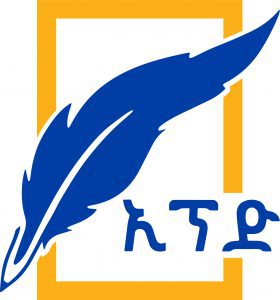
Any Ethiopian would list many reasons why the Grand Ethiopian Renaissance Dam (GERD) is important for the people of Ethiopia. But the two most common ones are that it provides an electric power supply and that it solves the decades-old quest of the people to utilize their own resources for their own development.
The GERD generating more than 5,200 megawatts of electric power would be a great deal as it almost doubles the existing total power supply. It also sets an example for people like Ethiopians that they have to have the resolute stance to commit their knowledge, resources, etc. to transform their socio-economy.
When Abbay is mentioned what comes to the mind of many people is that while having such a big river which is the longest in the world and the second in Africa in terms of water volume they are rendered poor, backward and victims of drought and famine.
Indeed the governments that ruled the country in different times have built hydropower dams in various rivers across the nation. These dams are able to provide affordable energy to the people as well as some neighbouring countries. But these dams were built on the rivers of the country that are smaller than Abbay. So what was holding the leader’s hands from building hydropower or irrigation dams on the river?
For anyone who seriously follows up on the history of the country, it is crystal clear that the main reason for the above problem is the colonial period mentality of the lower riparians who want to maintain the entire water for themselves by excluding Ethiopia, which actually contributes more than 85 % of the Nile water.
Indeed the governments that ruled over the country so far understand that Abbay is a transboundary river and should be shared among all the riparians. Therefore, their quest all the time was to equitable share and utilization. Yet due to the colonial period agreement signed between the two lower riparians, Egypt and Sudan Ethiopia was not able to secure the necessary funding and technical assistance to harness the river.
Of course, Ethiopia is still a developing country that grapples with financial and technical constraints to build such a globally known mega project. Even the other power dams were built with financial and technical support or loans from countries or international financiers. But all the attempts to secure loans and technical cooperation from similar sources were stalled as the lower riparians always posed diplomatic hurdles against them.
This was found to be a chain that holds Ethiopia and other African or developing countries’ hands from building dams, or even other mega-development projects. These countries were left with two choices: either to live in poverty while simply gazing at their natural resources or break the chains holding them.
Ethiopia chose the second one. The then Prime Minister of the country Meles Zenawi officially launched the construction of the dam on 2 April 2011. During his inaugural speech, he made a remark that remained a famous adage “We are both the owners, financiers and engineers of the dam”
Now after 16 years of unreserved struggle, the people and government of Ethiopia have reached the day of officially inaugurating the historical mega dam. Even though it took more years and budget than originally planned, the entire cost was covered by the contribution of the people.
Just like the victory of Adwa went against the popular thought that black people could not fight and conquer white expansionists, the launching of GERD also broke the dangerous thought that loans and donations are the only way out to build important development facilities or infrastructure thereby lifting oneself out of poverty and backwardness.
More than anything what helped to build this huge and worthwhile dam is the people’s strong desire to prove their right to utilize their natural resources for their development against any pressure. As such, it is also going to supply not only electric power but also a strong African motive that the best way to free oneself from the chains of colonial period mentalities or neocolonial extortions is to decide to break them and take all the necessary commitments for their realization.
Many African countries need to adopt such a stance and fend off all the barriers that are holding them back from progressing economically and politically. For instance, Africa is believed to be a focus of attention in mineral exploration and development in the coming years as it holds about 30% of the world’s reserve of critical minerals for clean energy transition. Hence, it must not remain passive in the negotiations for the development of the minerals due to the usual excuses like shortage of financing and technical capacity. Rather it has to secure its maximum benefit both economically and environmentally by raising its bargaining power.
In addition, Africa is undertaking a concerted effort to launch the Africa Continental Free Trade Area (AfCFTA) which is believed to be the largest single market in the world. With 1.4 billion potential buyers and over a 3.4 trillion economy, it is indeed a game changer for the continent’s economy.
In this case also Africans should not drag their feet to implement this flagship project and wait until and demanding factor emerges. They should rather show maximum commitment and declare their economic independence through the continental free trade area.
BY ZEKARIAS WOLDEMARIAM
THE ETHIOPIAN HERALD SUNDAY EDITION 30 MARCH 2025




